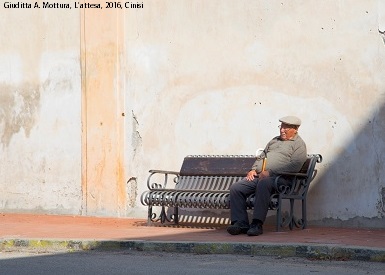Information Channels and Narratives: To Vaccinate or Not to Vaccinate, That is the Question
DOI:
https://doi.org/10.54103/2035-7680/19127Parole chiave:
Pandemic; Discourse Analysis; COVID-19 Vaccinations; Vaccine NarrativesAbstract
The discourses surrounding the COVID-19 vaccination are extensive and have been prolific over the last eighteen months. There has been particular debate among groups of vaccinated and non-vaccinated individuals discussing health benefits and a sense of civic duty in order to protect oneself and those around us as well as considering the extent to which a state really can oblige citizens to uptake the vaccine through a vaccination mandate.
This study investigated the discourses regarding choosing to undergo the SARS-CoV-2 vaccination or otherwise and how these discourses are framed within the global and Italian contexts. The role of information channels, including the media, was also investigated along with the power balances revealed among the vaccinated and non-vaccinated individuals’ discourses. An online ethnographic poll was designed and distributed through online channels and follow up focus groups using semi-structured interviews were recorded for transcription and linguistic analysis. Results show some interesting linguistic findings regarding potential discrimination due to the vaccination pass mandate along with the narratives that surround these.
Metriche
Riferimenti bibliografici
Agar, Michael H. The professional stranger: An informal introduction to ethnography. San Diego: Academic Press, 1996.
Arif Nadia, Roxanne H. Padley, et al. “Fake News or Weak Science? Visibility and Characterization of Antivaccine Webpages Returned by Google in Different Languages and Countries.” Frontiers in Immunology, vol. 9, no. 1215, 2018, pp. 1-12.
Basch, Corey H., and MacLean, Sarah A. “A content analysis of HPV related posts on instagram.” Human vaccines & immunotherapeutics, vol. 15, no. 7-8, 2019, pp. 1476-1478.
Durmaz, Nihal, and Hengirmen, Engin. “The dramatic increase in anti-vaccine discourses during the COVID-19 pandemic: a social network analysis of Twitter.” Human vaccines & immunotherapeutics, 2022, pp. 1–13.
Ekram, Sahrish, et al. “Content and commentary: HPV vaccine and YouTube.” Journal of pediatric and adolescent gynecology, vol. 32, no. 2, 2019, pp. 153–157.
Fairclough, Norman. Critical Discourse Analysis: The Critical Study of Language. London: Longman, 1995.
Forrester, Nikki. “How to manage when your fieldwork is cancelled.” Nature, 2020 Nov 27. Advance online publication. https://doi.org/10.1038/d41586-020-03368-0. Accessed 15 Oct. 2022.
Goodson, Leigh., and Vassar, Matt. “An overview of ethnography in healthcare and medical education research.” Journal of educational evaluation for health professions, vol. 8, no. 4, 2011, pp. 1-5.
Grego, Kim. Old, female and COVID-19+: issues of age and gender in the midst of the SARS-CoV-2 pandemic, Languaging Diversity 2021, Underline Science Inc. https://underline.io/36167-old,-female-and-covid-19+-issues-of-age-and-gender-in-the-midst-of-the-sars-cov-2-pandemic. Accessed 14 Feb. 2022.
Leeman, Adrian, et al. “Linguistic fieldwork in a pandemic: Supervised data collection combining smartphone recordings and videoconferencing.” Linguistic Vanguard, vol. 6, no. s3, 2020, pp. 1-16.
Klok, Jozina V. and Conners, Thomas J. “Using questionnaires as a tool for comparative linguistic field research: Two case studies on Javanese.” Methodological Tools for Linguistic Description and Typology, vol. 1, 2019, pp. 62-96.
Krause Nicole M., et al. “Fact-checking as risk communication: the multi-layered risk of misinformation in times of COVID-19.” Journal of Risk Research, vol. 23, no. 7-8, 2020, pp. 1052–1059. 10.1080/13669877.2020.1756385. Accessed 09 Jan. 2022.
Moran, Meghan B., et al. “What makes anti-vaccine websites persuasive? A content analysis of techniques used by anti-vaccine websites to engender anti-vaccine sentiment.” Journal of Communication in Healthcare, vol. 9. no. 3, 2016, pp. 151–163.
Piltch-Loeb, Rachael, et al. “Examining the effect of information channel on COVID-19 vaccine acceptance.” PloS one, vol. 16, no. 5, 2021, pp. 1-14.
Puri, Neha, et al. “Social media and vaccine hesitancy: new updates for the era of COVID-19 and globalized infectious diseases.” Human Vaccines & Immunotherapeutics, vol. 16, no. 11, 2020, pp. 1–8.
Oxford University Press. A report into the language of vaccines. file:///C:/Users/Roxanne%20H.%20Padley/Downloads/Oxford%20Languages%20WOTY%202021%20-%20A%20report%20into%20the%20language%20of%20vaccines.pdf. Accessed 10 Feb. 2022.
Ritchie, Hannah, et al. Coronavirus Pandemic (COVID-19). https://ourworldindata.org/ coronavirus. Accessed 12 Feb. 2022.
Scannell, Denise, et al. “COVID-19 Vaccine Discourse on Twitter: A Content Analysis of Persuasion Techniques, Sentiment and Mis/Disinformation.” Journal of health communication, vol. 26, no. 7, 2021, pp. 443–459.
Semino, Elena. From roast dinners to seatbelts: Metaphors to address Covid-19 vaccine hesitancy. https://www.lancaster.ac.uk/vaccination-discourse/2021 /09/12 /from-roast-dinners-to-seatbelts-metaphors-to-address-covid-19-vaccine-hesitancy-by-elena-semino/. Accessed 12 Feb. 2022.
Spradley, James P. The Ethnographic Interview. Holt, Rinehart and Winston, 1979.
---. Participant Observation. Holt, Rinehart and Winston, 1980.
Susi, Mart, and Tina, Pajuste. Comparative Study of Covid-19 “Vaccine Passport” Discourses. https://www.ssoar.info/ssoar/bitstream/handle/document/75126/ssoar-2021-susi_et_al-Covid 19_Vaccine_Passport_Discourses.pdf?sequence=4&isAllowed= y&lnkname=ssoar-2021-susi_et_al-Covid-19_Vaccine_Passport_Discourses.pdf. Accessed 02 Feb. 2020.
Van Dijk, Teun A. “Critical Discourse Analysis” The Handbook of Discourse Analysis edited by Deborah Tannen, Heidi E. Hamilton and Deborah Schiffrin, 2nd ed., Blackwell Publishers, 2015, pp. 466–485.
World Health Organization. WHO Director-General’s opening remarks at the media briefing on COVID-19 – 11 March 2020. https://www.who.int/director-general/speeches/ detail/who-director-general-s-opening-remarks-at-the-media-briefing-on-covid-19---11-march-2020. Accessed 15 Jan. 2022.
World Health Organization. Vaccine Equity, https://www.who.int/campaigns /vaccine-equity. Accessed 17 Jan. 2022.
World Health Organization. Infodemic. https://www.who.int/health-topics/infodemic/understanding-the-infodemic-and-misinformation-in-the-fight-against-covid-19#tab=tab_1. Accessed 30 Jan. 2022.
World Health Organization. Coronavirus disease (COVID-19): Vaccine Safety. https://www.who.int/news-room/questions-and-answers/item/coronavirus-disease-(covid-19)-vaccines-safety. Accessed 09 Feb. 2022.
Dowloads
Pubblicato
Come citare
Fascicolo
Sezione
Licenza

Questo articolo è soggetto a licenza Creative Commons Attribution-NonCommercial-NoDerivatives 3.0 International License.




